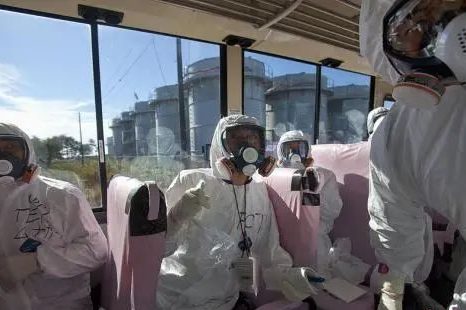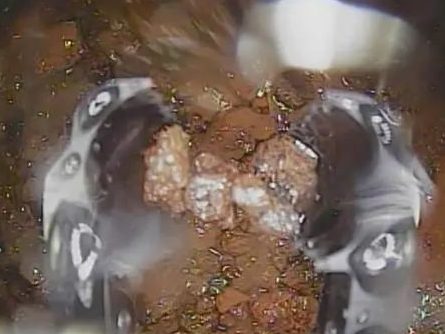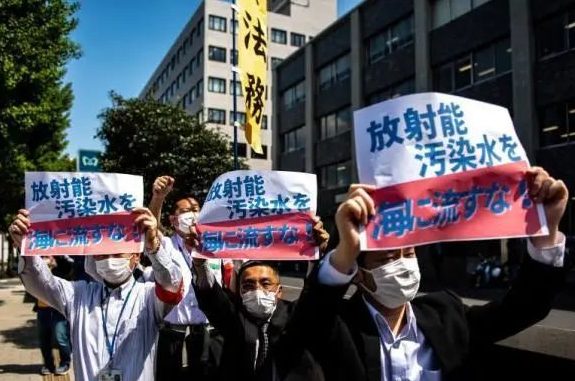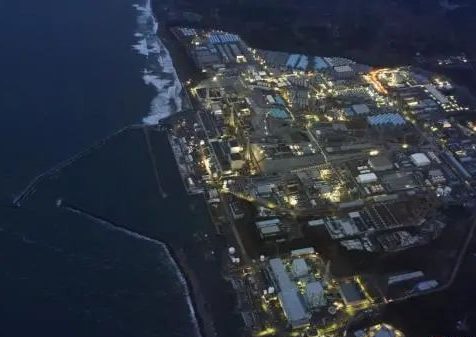April 13, the Japanese government held a cabinet meeting to formally decide that nuclear sewage from the Fukushima Daiichi nuclear power plant would be discharged into the sea after treatment and dilution. Many parties questioned that these treated waters still carry radioactive substances.
Where does the current million tons of Fukushima nuclear sewage come from? What is the harm of nuclear sewage? Can seafood still be eaten? What areas will be affected by the discharge of nuclear sewage into the sea? How does the international community respond to this? The Japanese government has asked Tokyo Electric Power Company, which operates the Fukushima Daiichi nuclear power plant, to prepare for the release of nuclear sewage in two years. It is clear that from then on, the “Pandora’s Box” will be opened.

Where does 1.2 million tons of nuclear sewage come from?
This starts with the strongest earthquake on the east coast in Japan in March 2011.
The strong sense of the 9-magnitude earthquake triggered a four-story tsunami to rush to the coast, causing the meltdown of three reactors at the Fukushima Daiichi nuclear power plant and the leakage of radioactive materials, resulting in one of the worst nuclear disasters in human history.
After the accident, the newly injected water that continuously cools the core, as well as a large amount of groundwater and rainwater infiltrated into the reactor, generated a large amount of nuclear sewage.
At present, more than 1.2 million tons of nuclear sewage have been stored in thousands of large water storage tanks at Fukushima Nuclear Power Plant. Moreover, Fukushima still produces about 140 tons of nuclear sewage every day. Nuclear sewage is expected to reach the limit of 1.37 million tons of water storage facilities by 2022.
Will nuclear sewage damage human DNA?
Japan’s discussion on the discharge of nuclear sewage into the sea began as early as 2011. The government most recently put forward this idea in October 2020. However, due to fierce opposition from many parties, the idea failed to take place.
Originally, the word “nuclear sewage” was enough to cause people’s fear. In these waters, there are a large number of radionuclides. Although Tokyo Electric Power Company currently uses special equipment “polynuclide removal equipment” (ALPS) to purify nuclear sewage, it has been previously reported that even if Japan claims to have filtered “treated water”, it contains radioactive residues.
In 2019, the Woods Hole Institute of Oceanography in the United States said that nuclear sewage contains radioactive elements such as iodine-129, strontium-90, erium-106 and carbon-14. Among them, iodine-129 can cause thyroid cancer, and strontium-90 is listed as a category of carcinogens by the World Health Organization, which is easy to cause leukemia.
The environmental protection organization Greenpeace pointed out in 2020 that the high level of radioactive isotope carbon-14 and other radioactive substances in Fukushima nuclear sewage is quite dangerous, and there is a potential danger of damaging human DNA.

Affected the table, can seafood still be eaten?
According to the Health Times, citing experts, “Overall, the discharge of nuclear sewage into the sea will affect us.”
According to the report, Liu Entao of the School of Oceanography of China University of Geosciences pointed out that “human beings are at the top of the pyramid of the food chain. The radioactive elements rich in seafood and other organisms will affect human beings through the transmission of the food chain.”
According to the analysis, human beings indirectly ingest various radioisotopes in seawater through the consumption of seafood. Experiments have proved that if radioactively contaminated seafood is eaten in large quantities for a long time, it may cause the accumulation of radioactive substances in the body to exceed the allowed amount, causing chronic radiation diseases and other diseases, causing damage to blood organs, endocrine systems, nervous systems and other diseases.
There is no precedent for nuclear sewage drainage in the world?
Before the Fukushima nuclear accident, mankind had experienced many major nuclear accidents.
However, including the Chernobyl nuclear power plant spill accident and the Three Mile Island nuclear accident, they have chosen atmospheric release. Some experts pointed out that there have been no nuclear accidents like the Fukushima nuclear accident that generate a large amount of sewage before, so there is no precedent for sewage and discharge to the sea after the nuclear accident.
In addition, the expert also said that there is no provision for the inspection and re-discharge of treated nuclear sewage by international third-party agencies, and there are no relevant inspection procedures and standards.

What are the other “options” for treating nuclear sewage?
Since 2013, the Japanese government has proposed five methods for sewage disposal, including: formation injection, discharge into the sea, steam release, hydrogen release and underground burial.
Subsequently, the expert committee organized by the Ministry of Economy, Trade and Industry of Japan submitted a report in February 2020, believing that the “most practical solution” is to dilute nuclear sewage into the sea or evaporate into the atmosphere.
However, as the report of the Expert Meeting of the Ministry of Economy, Trade and Industry wrote: “Emissions into the sea take the shortest time and the least cost.” As a result, the option of discharging nuclear sewage into the sea was selected.
Which areas will nuclear sewage affect?
It is foreseeable that once Japan discharges treated nuclear sewage into the sea, it will be difficult to collect.
Initially, the waters along the Pacific coast of Japan, especially the local waters around Fukushima Prefecture, and then sewage will pollute the East China Sea. The countries surrounding Japan will inevitably be affected.
According to a German marine scientific research institute, radioactive material will spread to most of the Pacific Ocean in 57 days from the date of discharge, and the United States and Canada will be affected in three years.
Taking the radioactive material caesium as an example, the Japan Atomic Energy Research and Development Agency has computer simulation calculused the spread of radioactive caesium with a half-life of about 30 years and found that it will reach North America in five years along the current; it will return to eastern Asia with the current in 10 years; and in 30 years, it will spread to almost the entire Pacific Ocean.
The people were angry, “Japan opposes Japan first”
The most direct resistance from the Japanese government to discharge nuclear sewage into the sea comes from Japan.
On the eve of the Japanese government’s decision, several civic groups in the country submitted the collected signatures against the discharge of nuclear sewage into the sea on April 12, a total of about 64,000 copies from 88 countries and regions, including Japan.
Natsaka Manda, director of FoE Japan, a Japanese environmental protection group, pointed out that the Japanese government’s decision was a “rough way of decision” that was not fully discussed.
In addition, the “National Second Generation Group Liaison Agreement for Victims of Nuclear Explosions” announced on the 12th that it had sent a petition to Prime Minister Yoshihiro Kan and six relevant cabinet staff to not be discharged into the sea. President Takashi Sakiyama, 62, said: “Tongdian and the government should explore ways to manage sewage on land.”
On April 12th, local time, outside the Prime Minister’s Office in Tokyo, local people held a rally to protest against the Japanese government’s plan to discharge purified water from the disaster-stricken Fukushima nuclear power plant into the sea.
The international community is of great concern, and the United States said…
Foreign media pointed out that in the latest statement, the United States seems to acquiesce in Japan’s decision. U.S. State Department spokesman Ned Price said that the United States believes that Japan’s measures “seems to meet globally recognized nuclear safety standards” and will continue to communicate with Japan.
On April 13, the South Korean government expressed deep regret about Japan’s decision and said it would take all feasible measures to protect the safety of South Korean citizens. Mr. Ju Runzhe, director of the State Adjustment Office, said that the government urged Japan to transparently disclose Fukushima nuclear sewage treatment information and let the international community scientifically verify the treatment measures.
The previous day, Director General Grossey of the International Atomic Energy Agency said that the Agency has taken note of the concerns about this matter, understands that the matter is receiving global attention, and is willing to advance the Agency’s assessment and supervision in a fair, objective and scientific manner.
Jennifer Morgan, Director-General of Greenpeace International, issued a statement saying that the Japanese government and Tokyo Electric Power thought that the discharge of nuclear sewage into the Pacific Ocean could be “very terrible”. The decision of the Japanese government is contrary to the legal obligations under the United Nations Convention on the Law of the Sea.
On April 9, 12 and 13, the Ministry of Foreign Affairs of China responded to Japan’s nuclear sewage discharge problem three times. In the latest statement on the 13th, a spokesman for the Ministry of Foreign Affairs said that Japan unilaterally decided to dispose of nuclear wastewater from the Fukushima nuclear power plant accident by sea discharge without exhausting the means of safe disposal, regardless of domestic and foreign doubts and objections, and without full consultation with neighboring countries and the community. This practice is extremely irresponsible and will Seriously harms international public health security and vital interests of the people of neighboring countries.
At the same time, China pointed out that it will continue to closely follow developments with the international community and reserve the right to respond further.



